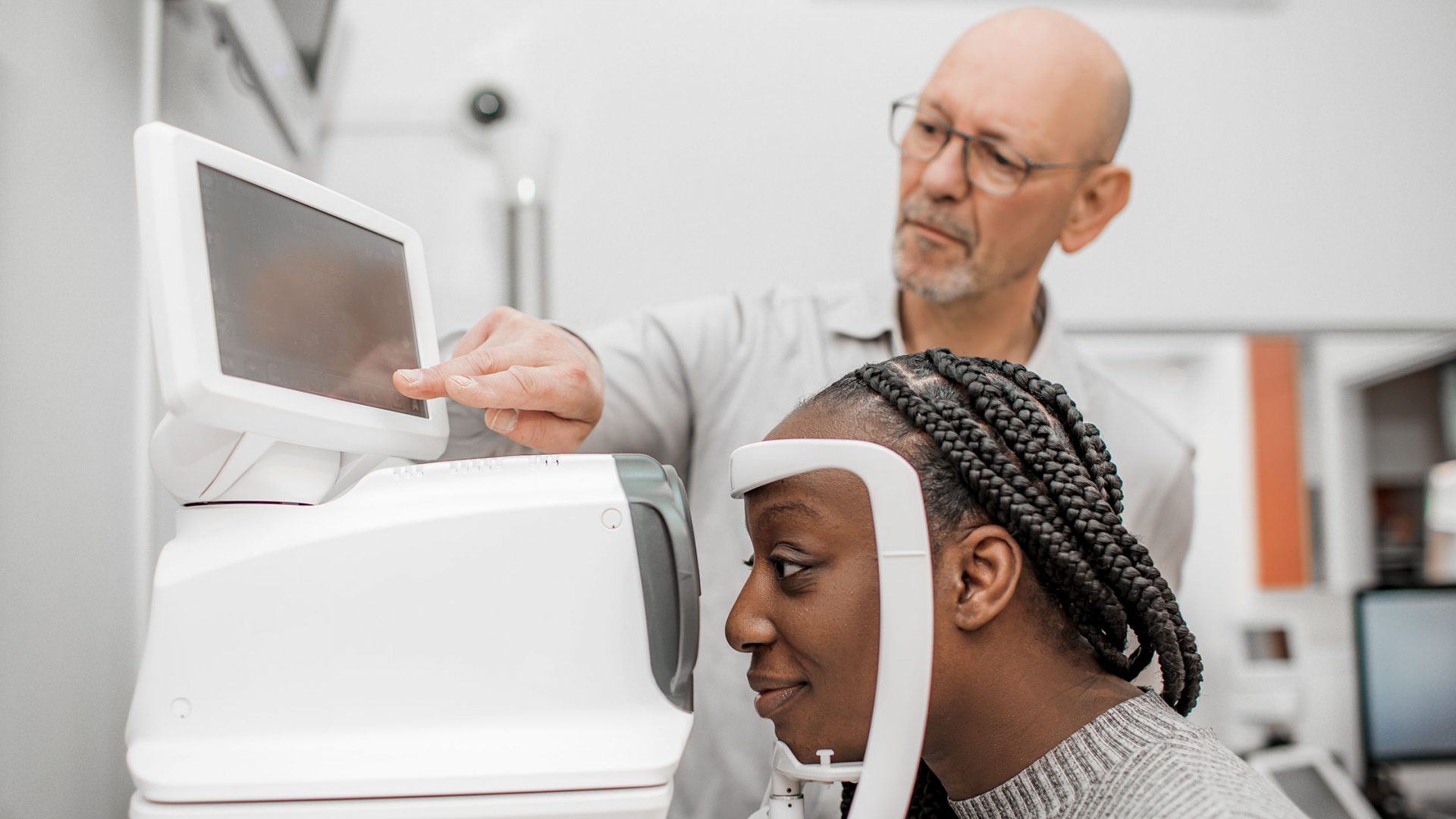The outer retinal region known as band 2 has long been recognized as a useful biomarker for visual outcome in numerous retinal diseases. Yet no consensus exists on whether band 2 represents the photoreceptor inner segment/outer segment (IS/OS) junction or the IS ellipsoid mitochondria.
Because aspects of retinal anatomy at the micrometer scale cannot be resolved by even the highest-resolution near-infrared optical coherence tomography (NIR OCT) systems, that controversy has yet to be settled.
A study presented at the 2023 Association for Research in Vision and Ophthalmology annual meeting, however, offered evidence that could help tip the scales. Led by Vivek J. Srinivasan, PhD, associate professor of ophthalmology and radiology, and postdoctoral fellow Pooja Chauhan, PhD, the researchers used a novel approach—visible light OCT, whose shorter central wavelengths can yield a much finer axial resolution.
“Our measurements agreed much more closely with the IS/OS junction than with the distribution of mitochondria in the IS.”
Vivek J. Srinivasan, PhD
“With this technology, we’re not just looking at layers of the retina, but at structures within layers,” says Dr. Srinivasan, whose lab is developing improvements in system design aimed at making the modality a practical complement to NIR OCT.
Reflectivity Division Suggests a Myoid Origin
In their study, the team performed in vivo visible light OCT to investigate the IS myoid and ellipsoid zones in mouse retinas, and then compared results with ex vivo histology and electron microscopy. They observed a subtle reflectivity division between these zones—a disparity with surprising characteristics.
“When we zoomed in with resolution on the micron scale, we found that the myoid had higher reflectivity than the ellipsoid, where the mitochondria are,” Dr. Srinivasan explains. This result, he adds, challenges the current interpretation of band 2 being due mainly to mitochondria scattering within the ellipsoid.
“It’s crucial that we learn to interpret the data on these regions correctly, both to improve our diagnostic capabilities and to develop better treatments.”
“Our measurements agreed much more closely with the IS/OS junction than with the distribution of mitochondria in the IS, suggesting that the latter hypothesis for band 2 needs to be reevaluated.”
Shedding Light on Macular Degeneration Progression
In previous research, Dr. Srinivasan and his team have discovered half a dozen new retinal features using visible light OCT, including bands in the photoreceptors, the retinal pigment epithelium, and Bruch’s membrane. Going forward, the group plans to investigate how these features change in normal aging and in age-related macular degeneration.
“By examining these bands in minute detail, we hope to get a clearer understanding of macular degeneration and other retinal disorders,” Dr. Srinivasan explains. “It’s crucial that ophthalmologists learn to interpret the data on these regions correctly, both to improve our diagnostic capabilities and to develop better treatments.”






